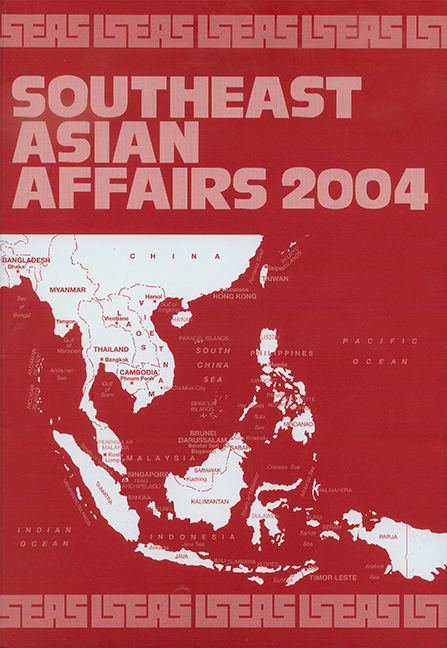The GRP-MILF Peace Talks: Quo Vadis?
from THE PHILIPPINES
Published online by Cambridge University Press: 21 October 2015
Summary
Introduction and Background
The conclusion of the 1996 Final Peace Agreement (FPA) between the government of the Philippines (GRP) and the Moro National Liberation Front (MNLF) did not terminate the Muslim secessionist movement in the island of Mindanao and Sulu archipelago, in southern Philippines. Nur Misuari's (founder and chairman of the MNLF) assumption as regional governor of the Autonomous Region in Muslim Mindanao (ARMM) and as chairman of the Southern Philippines Council for Peace and Development (SPCPD) for five years (1996–2001) has not brought about the promised peace and development in Mindanao, Sulu, and Palawan.
The ignominious failure of Misuari to effectively wield governmental powers to attain Muslims' quest for lasting peace and sustained development led to his ouster not only as ARMM governor and SPCPD chairman but also as MNLF chairman. Misuari's expulsion from government was followed by his incarceration and is currently facing trial for charges of sedition and corruption.
The MNLF, the revolutionary organization that Misuari led for thirty years both in war and peace, is now under a new leadership. Led by the “Council of 15”, it “retired” Misuari and rendered him powerless by euphemistically naming him as “Chairman Emeritus”. Through a resolution it issued on 29 April 2001, Misuari was declared as “incompetent” to remain as MNLF's chairman. The Council later proclaimed itself as the legitimate Central Committee of the MNLF which was eventually recognized both by the Organization of Islamic Conference (OIC) and the Philippine government. Support for the new MNLF leadership was reiterated in the OIC 10th summit meeting held in Putrajaya, Malaysia, on 15 October 2003, claiming it to be the sole “representative of Muslim community in the Philippines”.
Despite OIC's and the government's acknowledgement of MNLF and the ARMM as the Muslims' organizational expression and spokesperson in the Philippines, they nevertheless recognize that the Muslims' quest for political autonomy and self-governance has not been fully satisfied.
- Type
- Chapter
- Information
- Southeast Asian Affairs 2004 , pp. 205 - 222Publisher: ISEAS–Yusof Ishak InstitutePrint publication year: 2004



